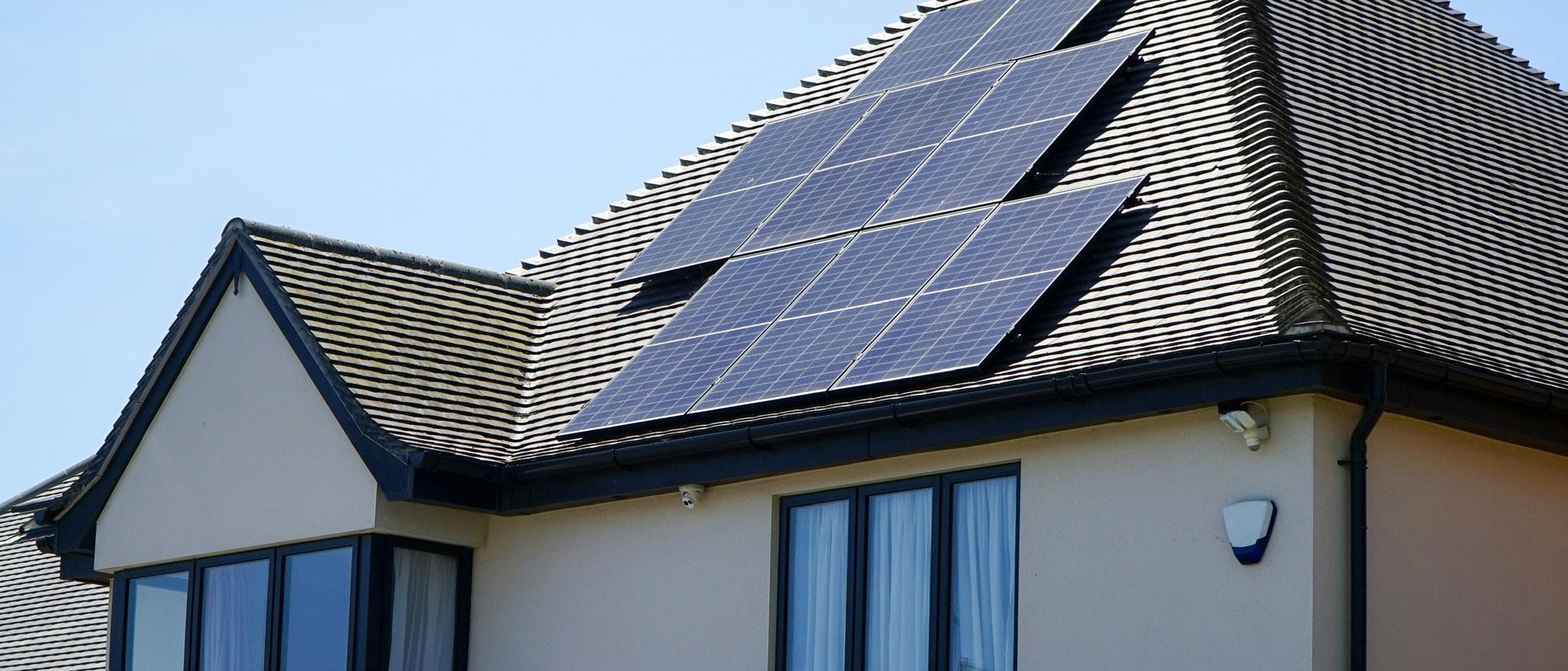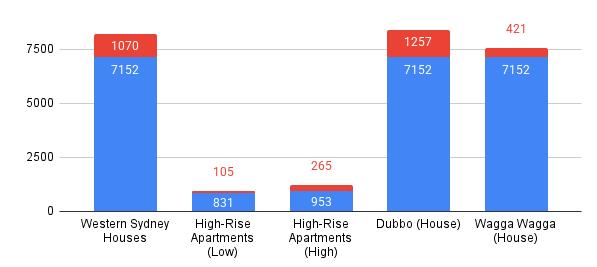
7 minute read
Navigating the new BASIX standards: A practical guide for NSW building
The Building Sustainability Index (BASIX) has been a cornerstone of NSW’s sustainable building practices since 2004. Its impact has been substantial: over half a million NSW homes have met BASIX standards, collectively saving 340 billion litres of potable water and reducing emissions equivalent to 12.3 million tonnes of carbon dioxide. As we move toward more ambitious climate goals, the October 2023 BASIX updates represent the most significant changes to the scheme since its inception.
With the next BASIX review scheduled for later in 2025, industry professionals should pay particular attention to these current requirements while also preparing for further evolution. This upcoming review is expected to align with the 2025 National Construction Code update cycle, potentially creating a more unified approach to sustainable building across Australia.
KEY CHANGES AND PRACTICAL IMPLICATIONS
The most significant change is the increase in thermal performance and energy standards. New homes will need to achieve a minimum 7-star NatHERS rating, up from the current average of 5.5 to 6 stars. This aligns with the National Construction Code 2022 energy efficiency requirements and represents a substantial shift in building design and construction practices.
These changes come at a critical time when energy costs are rising significantly for NSW households. The energy savings projected under these new standards become even more valuable in today’s volatile energy market, potentially shortening payback periods for sustainability investments.
An experienced Western Sydney builder, John Chen, notes: ‘We’re finding that achieving 7 stars requires consideration of these elements from the earliest design stages. Retrofitting these features later in the design process is both costly and less effective.’
The industry is currently facing skilled labour shortages, particularly for workers trained in high-performance building techniques. Builders who invest in workforce development and training for these new standards may gain a significant competitive advantage in the NSW residential market.
However, it’s important to note that these enhanced standards don’t apply uniformly across NSW. Homes in North Coast climate zones and small apartment buildings up to 5 storeys are exempt from the higher thermal performance and energy standards, based on cost-benefit analysis showing that energy bill savings wouldn’t adequately offset increased construction costs in these cases.
Breaking down the new thermal performance requirements
Increasing minimum NatHERS ratings from 5.5–6 stars to 7 stars requires a fundamental shift in how we approach residential design and construction. This isn’t just about adding more insulation; it demands a holistic approach to building design.
For architects, building designers and builders, this means carefully considering:
• building orientation and solar access
• window sizing, placement and glazing specifications
• thermal mass placement and utilisation
• ventilation pathways and natural cooling opportunities
• shading strategies for different seasons

Regional variations and exemptions: what you need to know
Understanding where and how the new standards apply is crucial for compliance. The standards vary across NSW, with important exemptions for:
• North Coast climate zones
• small apartment buildings (up to 5 storeys)
• alterations and additions under $50,000
• swimming pools under 40,000 litres
This regional variation recognises the diverse climate conditions across NSW and the varying cost-benefit ratios of implementing higher standards in different areas.

COST IMPLICATIONS AND CLIENT BENEFITS
The financial impact varies significantly depending on building type and location. Here’s what industry professionals should prepare their clients for:
For houses:
• Western Sydney: additional $7,152 upfront
• annual energy savings: $1,070
• payback period: approximately 6.7 years
For high-rise apartments:
• additional costs: $831–$953 per unit
• annual energy savings: $105–$265
• payback period: 3.5–9 years
Regional variations:
• Dubbo: annual savings up to $1,257
• Wagga Wagga: annual savings up to $421
• coastal regions: variable depending on location
These financial projections become increasingly significant as energy prices continue to rise. Additionally, insurance companies are beginning to recognise the value of more resilient, sustainable homes, with some offering better terms for properties built to higher standards. This provides an additional financial benefit beyond direct energy savings.
PRACTICAL COMPLIANCE STRATEGIES
Thermal performance solutions
Insulation optimisation
• roof/ceiling: upgrade to R6.0 where practical
• walls: consider composite systems for better performance
• floors: focus on edge insulation for slab-on-ground construction
Window specifications
• double glazing in high heat loss/gain areas
• consider low-e coatings for western exposures
• implement appropriate window-to-wall ratios
Air sealing
• implement comprehensive air barrier systems
• focus on common leakage points around windows, doors and service penetrations
• consider blower door testing during construction
For those working with dark roofs, it’s worth noting that while they haven’t been banned outright, they will make it harder to satisfy the higher BASIX thermal performance standards. Dark roofs have been excluded for those using the DIY method in some climate zones, including Greater Sydney, though they remain available under the DIY method for climate zones 9, 10 and 11.
Energy systems selection
The new standards make all-electric homes increasingly viable. Consider:
Hot water systems
• heat pump systems (COP >3.0)
• solar thermal with electric boost
• strategic placement for maximum efficiency
Space conditioning
• high-efficiency reverse cycle systems (minimum 3 stars)
• zoning controls for larger homes
• smart controls for optimal operation
Smart home technology integration provides additional opportunities to optimise energy use. Smart thermostats, energy monitoring systems and automated shading can all complement BASIX requirements while offering homeowners greater control over their energy consumption.
Supply chain disruptions continue to affect the availability of some high-performance building materials and systems. Early planning and flexibility in material selection may be necessary to meet the new standards while managing supply uncertainties.
For projects already underway, there are important transitional arrangements to consider. If you generated a BASIX certificate before 1 October 2023, you don’t need a new one, provided you submit it with your development application or lodge it with your application for a complying development certificate within the 3-month validity period. Additionally, for applicants who signed a building contract to construct a new single dwelling or dual occupancy before 1 October 2023, there’s an option to apply using the current standards if submitted before 30 June 2024.

PLANNING FOR COMPLIANCE
To ensure smooth project delivery under the new standards:
Early design stage
• conduct preliminary NatHERS assessments
• model different design options
• consider orientation and passive design strategies
Documentation phase
• prepare detailed material specifications
• document thermal performance details
• complete BASIX calculations
• prepare compliance statements
Construction stage
• implement quality control measures
• document any variations
• maintain material and installation records
Consumer demand for sustainable homes continues to grow, with recent market research indicating that energy efficiency features are increasingly influencing homebuyer decisions. Builders who adapt quickly to the new BASIX standards may gain competitive advantages in the NSW residential market by highlighting these features in their marketing materials.
LOOKING AHEAD
Regular reviews of BASIX standards are scheduled every 3 years, with the next review due in 2025. This upcoming review will likely align with the 2025 National Construction Code update cycle, potentially creating a more unified approach to sustainable building across Australia.
The construction industry should prepare for further evolution of these standards. Industry professionals are encouraged to:
• stay informed about emerging technologies and materials
• develop relationships with suppliers of high-performance building products
• invest in training and professional development
• document successful compliance strategies for future projects
• monitor changes in the National Construction Code that may influence future BASIX requirements

As climate change impacts become more apparent and energy costs continue to rise, these standards are likely to become increasingly stringent. Early adoption and continuous improvement will position industry professionals for long-term success in sustainable building practices.



